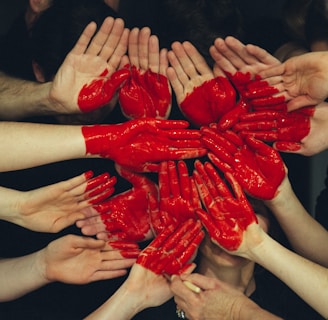
Continuous Professional Learning
In order to strengthen family involvement in their child’s learning, I will send out a monthly newsletter of tips and activities for home learning by ensuring feedback from them on the following month.
Two Strategies:
I will create newsletters that include simple and engaging prompts or activities that encourage input from families. For example, I will incorporate a “Share Your Story” section where families can describe how they implemented a tip or activity at home. I will highlight their contributions in the following month’s newsletter to encourage participation and foster a sense of community.
I will provide families with various ways to give feedback, such as a quick online survey thru a QR-code, a tear-off response section in the physical newsletter, or a comment box in the center. This ensures that families have accessible and convenient options to share their experiences and suggestions, which increases the likelihood of meaningful engagement.


These reflective goals will serve as my motivation as I enter the field of early childhood education. I am confident that my two years of experience will open new learning opportunities, helping me grow and become a better educator. By integrating activities across developmental areas into the curriculum, strengthening family involvement, fostering team collaboration, building community ties, and promoting environmental sustainability, I will continuously strive to improve my practice and contribute positively to the development of the children and the community I work with.
In order to promote the children’s holistic development, I will provide daily opportunities to engage in activities by incorporating all developmental areas in the curriculum program plan.
Two Strategies:
I will design activities that engage multiple developmental areas simultaneously. For example, I will create a sensory-based art activity where children use natural materials like leaves or sand to promote their physical and sensory development. I will encourage them to describe their artwork to their peers, which will support their language development, and I will invite them to reflect on how the activity makes them feel to foster emotional development. By doing this, I will ensure that each activity contributes to the child's holistic growth.
I will create learning zones that target specific developmental areas. These will include a literacy corner for cognitive and language skills, a dramatic play area for social and emotional development, a physical activity zone for gross motor skills, and an art and sensory station for creativity and fine motor skills. Children will rotate through these zones daily, using provocation and inquiry-based learning to engage in activities that support their overall development.


In order to enhance team collaboration, as a newly graduate, I will initiate a conversation to seek their feedback and to discuss any challenges and strategies by setting aside 10-15 minutes of time at the end of the month.
Two Strategies:
I will prepare in advance simple and questions for the monthly debrief, such as: What went well this month? What were the challenges? How can we improve? These questions will be given to colleagues to reflect, ensuring the discussion is efficient and focused.
I will introduce a shared journal where colleagues can jot down their thoughts, feedback, and challenges throughout the month. These will then be reviewed before the scheduled end-of-month discussions to identify recurring themes, making the conversation more meaningful and action-oriented.




In order to build ties with the local community, I will organize an event where the community members can be invited by sharing their work experiences where the children can learn from.
Two Strategies:
I will arrange a “Community Helper’s Day” where various professionals can visit the centre. Based on what is on the program plan, I will setup stations for the children to engage and further their learning experiences.
I will initiate a partnership with the local community to facilitate an event. For example, a representative from the local library to read a book for the children, or the food handler to share their work experience.


In order to help sustain the environment, I will promote awareness in the use of paper towels by making sure that children will take only what they need for wiping.
Two Strategies:
I will model the proper way to take only the necessary amount of paper towels during hand-washing. By demonstrating to children making the concept fun gives the children the encouragement to follow.
I will create a visual reminder near paper towel dispensers with simple instructions, such as "Take 1 or 2!" accompanied by illustrations or photos of the correct amount. Through this visual, and my guidance, they will eventually develop the good habit of awareness.
Children
Families
Communities
Colleagues
Environment
Figure 37. Leaves. Photo taken by A. Libed